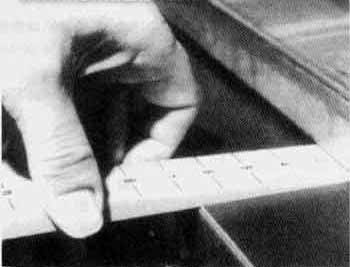The technical specifications of the screen are also an important factor influencing the transfer of ink. The smaller the mesh area of ​​the screen (for example, a mesh diameter of 27-31 μm), the less force is required to peel off the surface of the ink and the substrate. The smaller the force required, the smaller the mesh distance.
The surface of the substrate is also a factor that affects ink transfer and off-printing. The screen surface of the screen plate with strong ink absorption is easily detached. The absorption ability of the textile surface is strong, so the screen plate is easily detached from the substrate. This is also the reason why the screen pitch of the textile printing is smaller than that of other graphic printing. The surface tension of the substrate affects the surface energy of the ink, so it has a certain influence on the off-press version.
Other factors that determine the pitch are the screen size, doctor length (as opposed to screen), print pattern size (relative to screen), and the type of pattern (solid pattern and non-ground pattern requiring a large pitch).
Some of these factors can be changed, while others cannot be changed. Each print has its own specific printing conditions, and we must understand that it is important to make adjustments to the web spacing under different printing conditions. By standardizing operating procedures and testing newly purchased materials, it is ensured that the edition and commissioning can be successfully completed at the fastest speed.
Seven, network distance measurement method
There are two ways to regulate and determine the net distance. Many automatic printers and some manual screen printers have corresponding network adjustment functions. The problem is that most of them can only be adjusted roughly. Only a few high-end devices are equipped with a readable dial and can display the network distance digitally. Therefore, in most cases, it must rely on the operator's own adjustment.
In practice, operators have found some methods and techniques for measuring and controlling grid spacing. The simplest method is to use washers to place the washers on the four corners of the printing table, and then lay the screen flat on the four corners. The washers use different washers for different mesh distances. To this end, it is also possible to make some spacers of different thicknesses to meet the needs of various network spacings and to ensure the accuracy of the distance setting. Another easy way is to use a ruler or wedge to measure the distance from the underside of the screen to the bench or vacuum table (see Figure 2).

(Figure 2 network test wedge)
If you have a printer with a readable dial, you can directly read the value of the grid distance, of course, this is the most convenient. However, as mentioned earlier, in most cases, manual adjustment is required, and if the pitch is improperly adjusted, the trouble is greater. The final choice for screen printing operators is the use of mechanical gauges. Put the measuring instrument on the surface of the screen, zero the table, and then press it slowly and slowly until the screen touches the surface of the sheet. Subtract the thickness of the screen from the meter and the difference is The net distance there. Measured with a wire gauge, as long as the method is correct, the result is more accurate. With this type of meter, it is required to perform a reset before each measurement, and at the same time, the range of movement on the screen is limited. Therefore, in this sense, it is not very convenient to use this kind of measuring instrument on some printing presses. However, so far, screen printing industry only has this kind of measurement tool.
It is reported that the United States Screen Printing Technology Foundation (SYTF) has recently introduced a more effective network distance measurement tool - electronic measuring instrument, which can quickly and accurately measure the pitch of any place on the screen. The measuring instrument is easy to use and can display the value of the net distance at any time, so that the operator can quickly complete the debugging of the upper version.
There are several points that need to be specifically explained about the net distance of textile printing. Textiles are highly absorbent substrates, so the net pitch is usually smaller than other graphic prints.
The ideal net distance should be 0.8-1.6mm. However, specific settings must be based on screen tension, screen size, and the ink used. The small net distance can also reduce the amount of ink attached to the screen printer.
Since textile printing is accomplished using multiple print heads on multiple print stations, the consistency of the screen pitches of each print station is particularly important to ensure consistent color registration and consistent ink thickness. In addition, if you want to print the same pattern on several garments, the net distance must be adjusted accordingly as the thickness of the garment changes.
dairy cover leather
There are a series of paper grain and embossed patterns: 100 pattern PU, 138 pattern PU, 61 pattern, 67 pattern, 989
pattern, DE43 pattern, DE7 pattern, elephant pattern, mirror, sheep
leather, 87 pattern, R64 pattern, rain wire pattern and so on . Can be developed with the guests proofing. Can reach EN71, ROHS, 6P (the major heavy metals), 7P, REACH46 and other environmental requirements.
We
specialize in Italian hot pressing pu, suitable for high-end notebook,
business diary, manual, manager folder, recipes, book photo frame,
high-end Bible books, encyclopedia, annals and other cover and jewelry
box, glasses box , Wine boxes, moon cake boxes, tissue
boxes, stationery boxes, gift boxes, cosmetics boxes, apples, Samsung
and other electronic products packaging.

Diary Cover Leather,Cattle Pattern Diary Cover Leather,Leather Diary Cover,High Glossy Diary Cover Leather
Dongguan Mulsanne Leather Company Ltd. , http://www.mulsanneleather.com